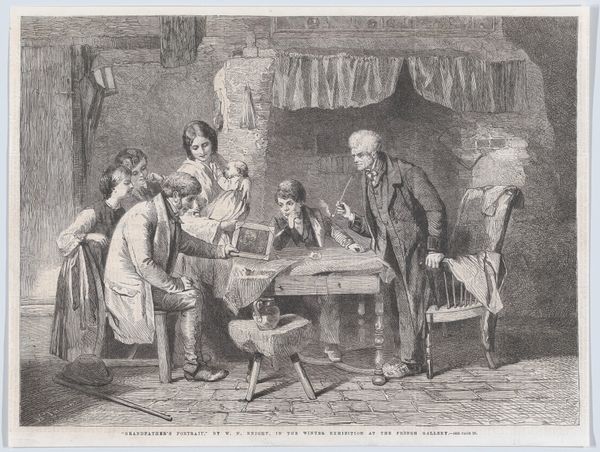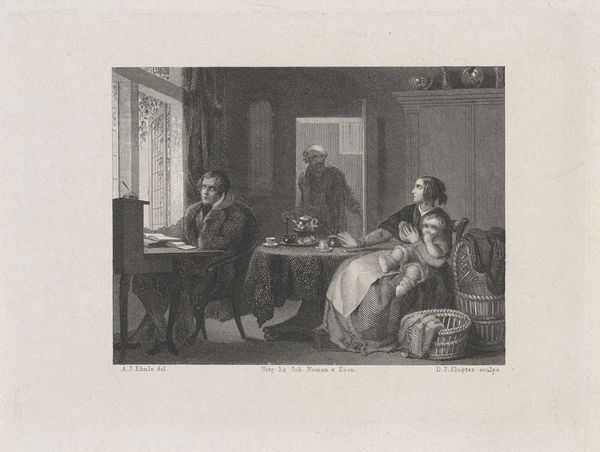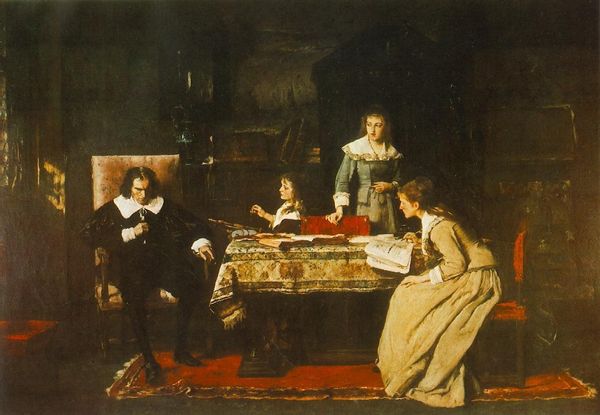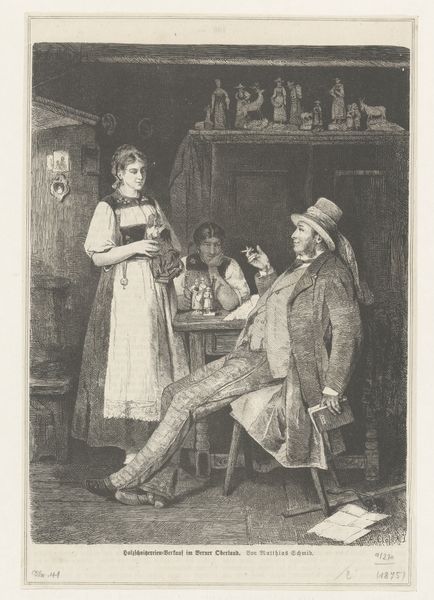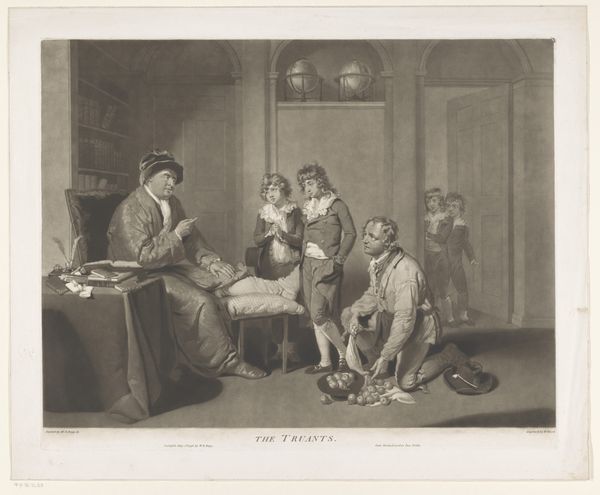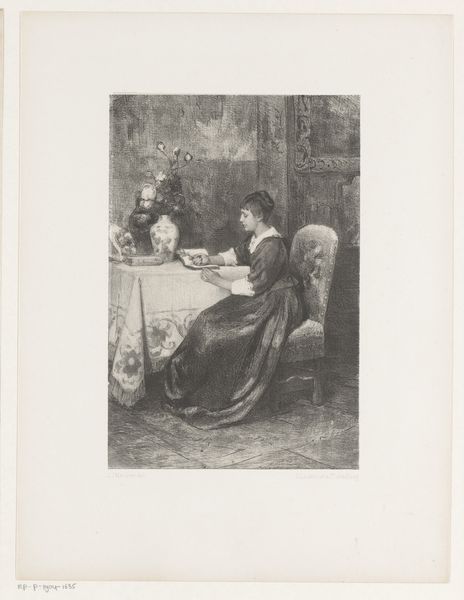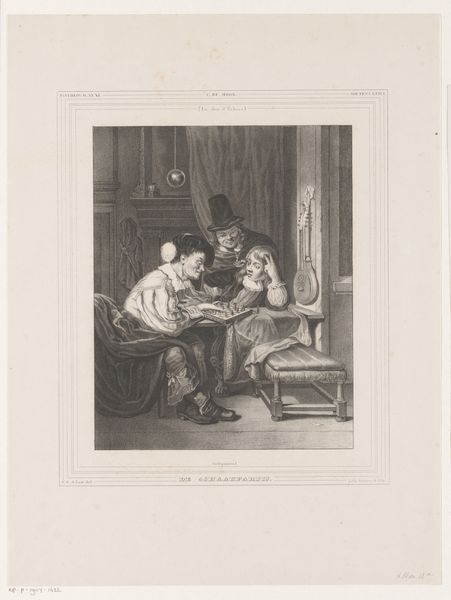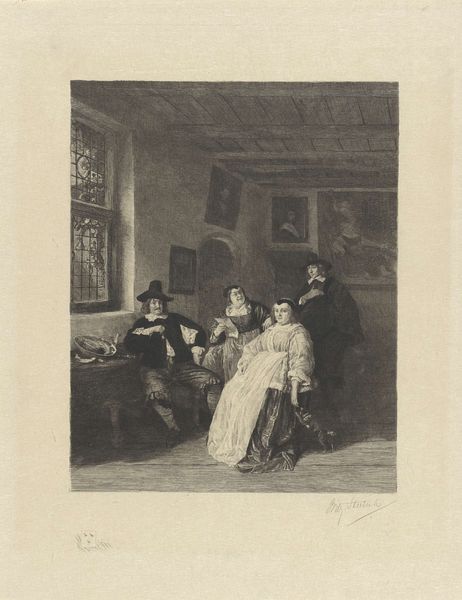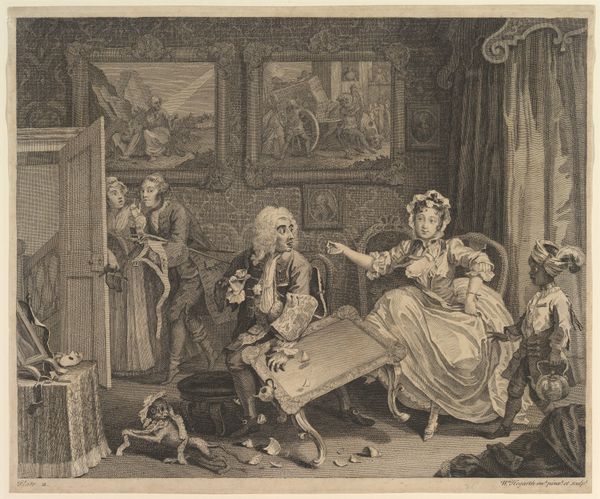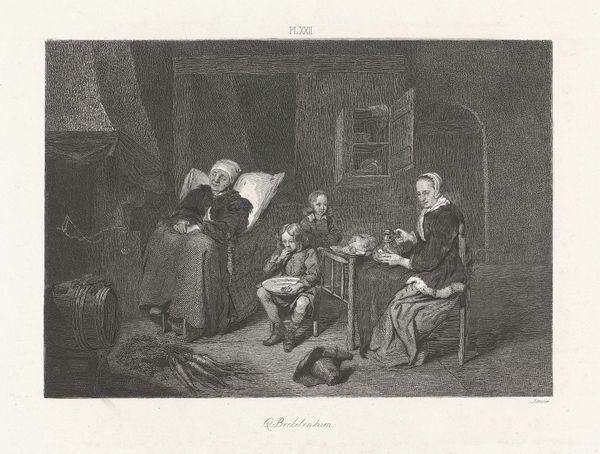
drawing, print, pencil, engraving
#
pencil drawn
#
drawing
#
narrative-art
# print
#
pencil sketch
#
old engraving style
#
charcoal drawing
#
charcoal art
#
historical photography
#
pencil
#
19th century
#
genre-painting
#
engraving
Dimensions: height 447 mm, width 592 mm
Copyright: Rijks Museum: Open Domain
Curator: Looking at this intriguing engraving by Charles Courtry, made between 1878 and 1881 and titled "Man, two women and a child around a table," one immediately notices the somber mood and very detailed rendering of the scene. Editor: Yes, that pervasive somber mood is certainly my first impression, too. The greyscale tones really emphasise a feeling of seriousness and quiet intensity, almost oppressive in a way. And notice the carefully arranged figures in a sort of tableau—the engraving hints at deep psychological relationships. Curator: It's thought that this artwork is connected to a larger dialogue on artistic depictions of domestic life in late 19th century Europe, with its representations of social roles and hierarchies, filtered through the tastes of an expanding middle class. The table, as the central element of the domestic sphere, highlights social relationships. Editor: And speaking of tables, note how it serves as more than just a physical object. It is covered with what appear to be manuscripts, binding the family to intellectual pursuits—recalling symbols of scholarship and learning passed down through generations. A quiet affirmation of power perhaps? Curator: It's interesting that you mention "power." The scene also recalls the power of images within institutions of high culture at the time. These institutions validated not only what art was, but also who was viewing art. Editor: It absolutely makes me think about the cultural symbolism of the clothing too: somber, high-necked collars, wide skirts. These all say something about the character and status of these figures. Their bodies encased in symbolism speak volumes about identity during the period. Curator: Certainly the clothing indicates status. But is Courtry simply reinforcing accepted notions, or quietly commenting on them? Genre scenes were common, yes, but rarely free of overt messages—about how society should be organized. I wonder about his specific choices here, and what message he was trying to express. Editor: An ambiguity certainly remains for the viewer, doesn’t it? This lingering unknown gives the work, even after over a century, much of its power and evocative mystery. Curator: True. These prints helped reinforce cultural values. That much we know. Charles Courtry, however, invites us to ask: What are those values exactly? Editor: Indeed, making this quiet scene all the more stimulating, even now.
Comments
No comments
Be the first to comment and join the conversation on the ultimate creative platform.
